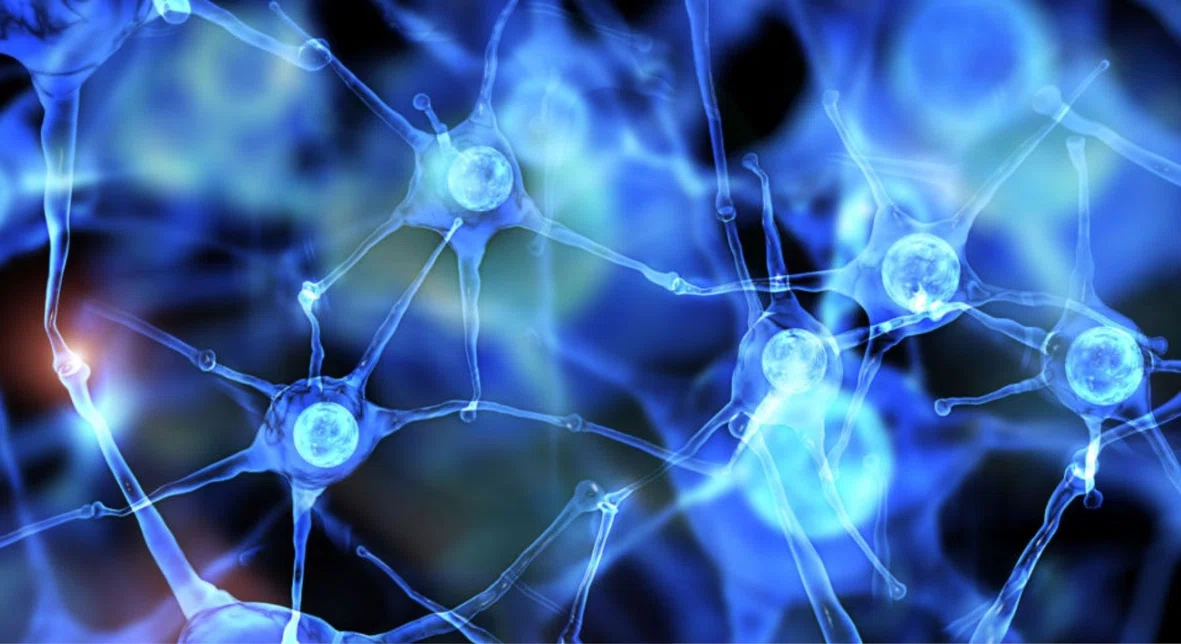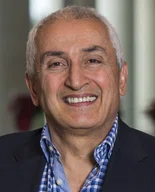
President’s letter
2020 Metrics
Cycle of Translation
Visionary Gifts

Discovery to Clinic

Innovative Education

Translational Luminaries
Introduction
The Ann Kimbell and John W. Johnson Center for Cellular Therapeutics
The Fondren Food & Health Alliance and The Fondren Inflammation Center
Cockrell Center for Advanced Therapeutics
Paula and Joseph C. “Rusty” Walter III Translational Research Initiative
Jerold B. Katz Academy of Translational Research
result
Outcomes Research
Precision Medicine
CPRIT Funding to Drive New Discoveries in Cancer Therapeutics
Siemens Healthineers and Houston Methodist Imaging Innovation Hub Empowers Researchers to Push the Boundaries
Novel Monoclonal Antibody Treatment Halts Tumor Growth in Deadly Ovarian and Pancreatic Cancers
Houston Methodist Institute for Technology, Innovation & Education (MITIESM)
Can Devices Provide A New Treatment Option for Glioblastoma?
Houston Methodist Hospital’s new Paula and Joseph C. “Rusty” Walter III Tower offers the Most advanced treatments and innovations available
Neuroimaging Offers New Insights into Neurodegeneration
COVID-19 Studies
Restorative Medicine
Houston Methodist and Rice University Launch Center for Translational Neural Prosthetics and Interfaces
Non-invasive Spinal Stimulation Enables Paralyzed People to Stand Unassisted
Dissolvable Implants Enhance the Body’s Ability to Heal Broken Bones
Cell Encapsulation May Hold the Key to Preventing Cell Transplant Rejection
Revolutionizing the Future of Complex Valve Disease Management



Science in Service
of
Medicineresult
President's letter
2020 Metrics
Cycle of Translation
Visionary Gifts of Hope


Introduction

The Ann Kimbell and John W. Johnson Center for Cellular Therapeutics

The Fondren Food & Health Alliance and The Fondren Inflammation Center

Cockrell Center for Advanced Therapeutics

Paula and Joseph C. “Rusty” Walter III Translational Research Initiative

Jerold B. Katz Academy of Translational Research

From Discovery to Clinic


Introduction

Restorative Medicine


Houston Methodist and Rice University Launch Center for Translational Neural Prosthetics and Interfaces

Non-invasive Spinal Stimulation Enables Paralyzed People to Stand Unassisted

Dissolvable Implants Enhance the Body’s Ability to Heal Broken Bones

Cell Encapsulation May Hold the Key to Preventing Cell Transplant Rejection

Revolutionizing the Future of Complex Valve Disease Management

Precision Medicine


CPRIT Funding to Drive New Discoveries in Cancer Therapeutics


An Innovative New Tool to Enable Drug Discovery and Personalized Medicine


Devising a Novel Combination Treatment for Aggressive Double-hit Lymphoma



Expanding the RNAcore to Encompass the Entire Cycle of a Cure


Siemens Healthineers and Houston Methodist Imaging Innovation Hub Empowers Researchers to Push the Boundaries

Novel Monoclonal Antibody Treatment Halts Tumor Growth in Deadly Ovarian and Pancreatic Cancers

Houston Methodist Institute for Technology, Innovation & Education (MITIESM)


Surgical Technology Developed in MITIE Gains FDA Approval


Pushing the Frontier of the Robotics Revolution

Can Devices Provide A New Treatment Option for Glioblastoma?

Houston Methodist Hospital’s new Paula and Joseph C. “Rusty” Walter III Tower offers the Most advanced treatments and innovations available

Neuroimaging Offers New Insights into Neurodegeneration

Translational Luminaries




Discovery to Clinic

Restorative Medicine
Houston Methodist and Rice University Launch Center for Translational Neural Prosthetics and Interfaces
Houston Methodist and Rice University Launch Center for Translational Neural Prosthetics and Interfaces

Neurosurgery’s history of cutting diseases out of the brain is morphing into a future in which implanting technology into the brain may help restore function, movement, cognition and memory after patients suffer strokes, spinal cord injuries and other neurological disorders. Rice University and Houston Methodist have forged a partnership to launch the Center for Translational Neural Prosthetics and Interfaces, a collaboration that brings together scientists, clinicians, engineers and surgeons to solve clinical problems with neurorobotics.

Gavin W. Britz, MD

Behnaam Aazhang, PhD
“This will be an accelerator for discovery. This center will be a human laboratory where all of us — neurosurgeons, neuroengineers, neurobiologists — can work together to solve biomedical problems in the brain and spinal cord. And it’s a collaboration that can finally offer some hope and options for the millions of people worldwide who suffer from brain diseases and injuries,” said Center Co-Director Gavin W. Britz, MD, Candy and Tom Knudson Distinguished Centennial Chair at Houston Methodist.
Houston Methodist neurosurgeons, seven engineers from the Rice Neuroengineering Initiative and additional physicians and faculty from both institutions form the center’s core team. The center also plans to hire additional engineers who will have joint appointments at Houston Methodist and Rice. Key focus areas include spinal cord injury, memory and epilepsy studies, and cortical motor/ sensation conditions.
“The Rice Neuroengineering Initiative was formed with this type of partnership in mind,” said center co-director Behnaam Aazhang, PhD, Rice’s J.S. Abercrombie Professor of Electrical and Computer Engineering, who also directs the neuroengineering initiative. “Several core members, myself included, have existing collaborations with our colleagues at Houston Methodist in the area of neural prosthetics. The creation of the Center for Translational Neural Prosthetics and Interfaces is an exciting development toward achieving our common goals.”
The physical space for the center’s operation includes more than 25,000 square feet of Rice Neuroengineering Initiative laboratories and experimental spaces in the university’s BioScience Research Collaborative, as well as an extensive build-out underway at Houston Methodist’s West Pavilion location that’s expected to be completed late in 2021. The Houston Methodist facility will include operating rooms and a human laboratory where ongoing patient/volunteer diagnosis and assessment, device fabrication and testing, and education and training opportunities are planned.
“This partnership is a perfect blend of talent,” said Rice’s Marcia O’Malley, PhD, a core member of the new center. “We will be able to design studies to test the efficacy of inventions and therapies and rely on patients and volunteers who want to help us test our ideas. The possibilities are limitless.”
Houston Methodist neurobiologist Philip J. Horner, PhD, describes the lab as “a merging of wetware with hardware,” where robotics, computers, electronic arrays and other technology — the hardware — is incorporated into the human brain or spinal cord — the wetware. The centerpiece of this working laboratory is a zero-gravity harness connected to a walking track with cameras and sensors to record feedback, brain activity and other data.
Center Collaborations
Collaborations already are underway between the two institutions, which sit across Main Street from one another in the Texas Medical Center. Among them are the following:
- Houston Methodist’s Dimitry Sayenko, MD, PhD, assistant professor of neurosurgery, and O’Malley, Rice’s Thomas Michael Panos Family Professor in Mechanical Engineering, will head the first pilot project involving the merging of two technologies to restore hand function following a spinal cord injury or stroke. O’Malley will pair the upper limb exoskeleton she invented with Sayenko’s noninvasive stimulator designed to wake up the spinal cord. Together, they hope these technologies will help patients achieve a more extensive recovery — and at a faster pace. Read more about Sayenko's work here.
- Britz, a neurosurgeon, and Lan Luan, PhD, Rice assistant professor of electrical and computer engineering, are collaborating on a study to measure the neurovascular response following a subarachnoid hemorrhage, a life-threatening stroke caused by bleeding just outside the brain. Two-thirds of people who suffer these brain Robotics & Brain Computer Interface.
- Britz and Center Co-Director Behnaam Aazhang, PhD, Rice’s J.S. Abercrombie Professor of Electrical and Computer Engineering, and Taiyun Chi, PhD, assistant professor of electrical and computer engineering at Rice, are collaborating on the detection of mild traumatic brain injuries from multimodal observations and on alleviating mTBI using neuromodulations. This project is of particular interest to the Department of Defense.
- Houston Methodist’s Dimitry Sayenko, MD, PhD, assistant professor of neurosurgery, and O’Malley, Rice’s Thomas Michael Panos Family Professor in Mechanical Engineering, will head the first pilot project involving the merging of two technologies to restore hand function following a spinal cord injury or stroke. O’Malley will pair the upper limb exoskeleton she invented with Sayenko’s noninvasive stimulator designed to wake up the spinal cord. Together, they hope these technologies will help patients achieve a more extensive recovery — and at a faster pace. Read more about Sayenko's work here.
- Britz, a neurosurgeon, and Lan Luan, PhD, Rice assistant professor of electrical and computer engineering, are collaborating on a study to measure the neurovascular response following a subarachnoid hemorrhage, a life-threatening stroke caused by bleeding just outside the brain. Two-thirds of people who suffer these brain Robotics & Brain Computer Interface.
- Britz and Center Co-Director Behnaam Aazhang, PhD, Rice’s J.S. Abercrombie Professor of Electrical and Computer Engineering, and Taiyun Chi, PhD, assistant professor of electrical and computer engineering at Rice, are collaborating on the detection of mild traumatic brain injuries from multimodal observations and on alleviating mTBI using neuromodulations. This project is of particular interest to the Department of Defense.
More from Discovery to Clinic








